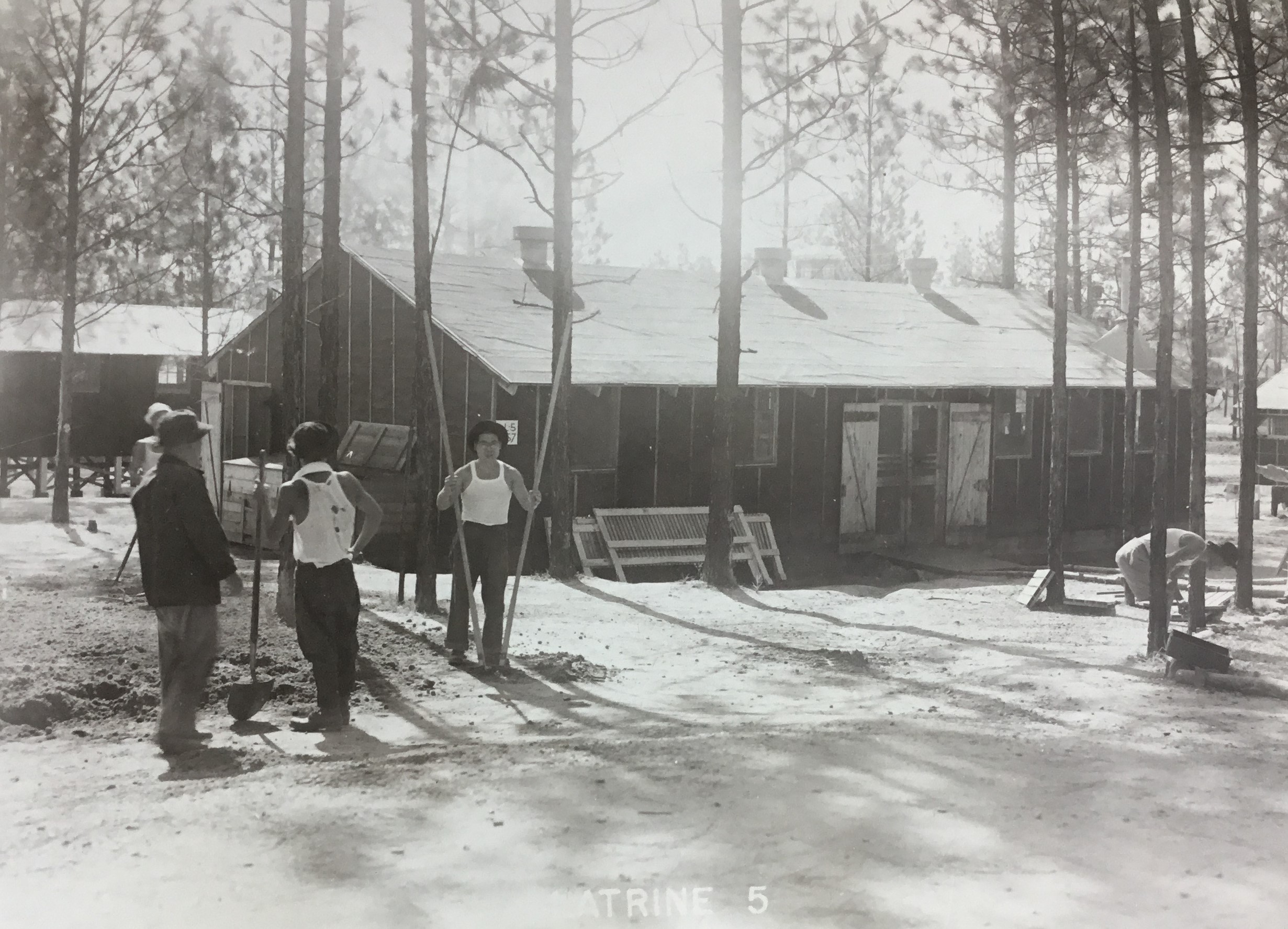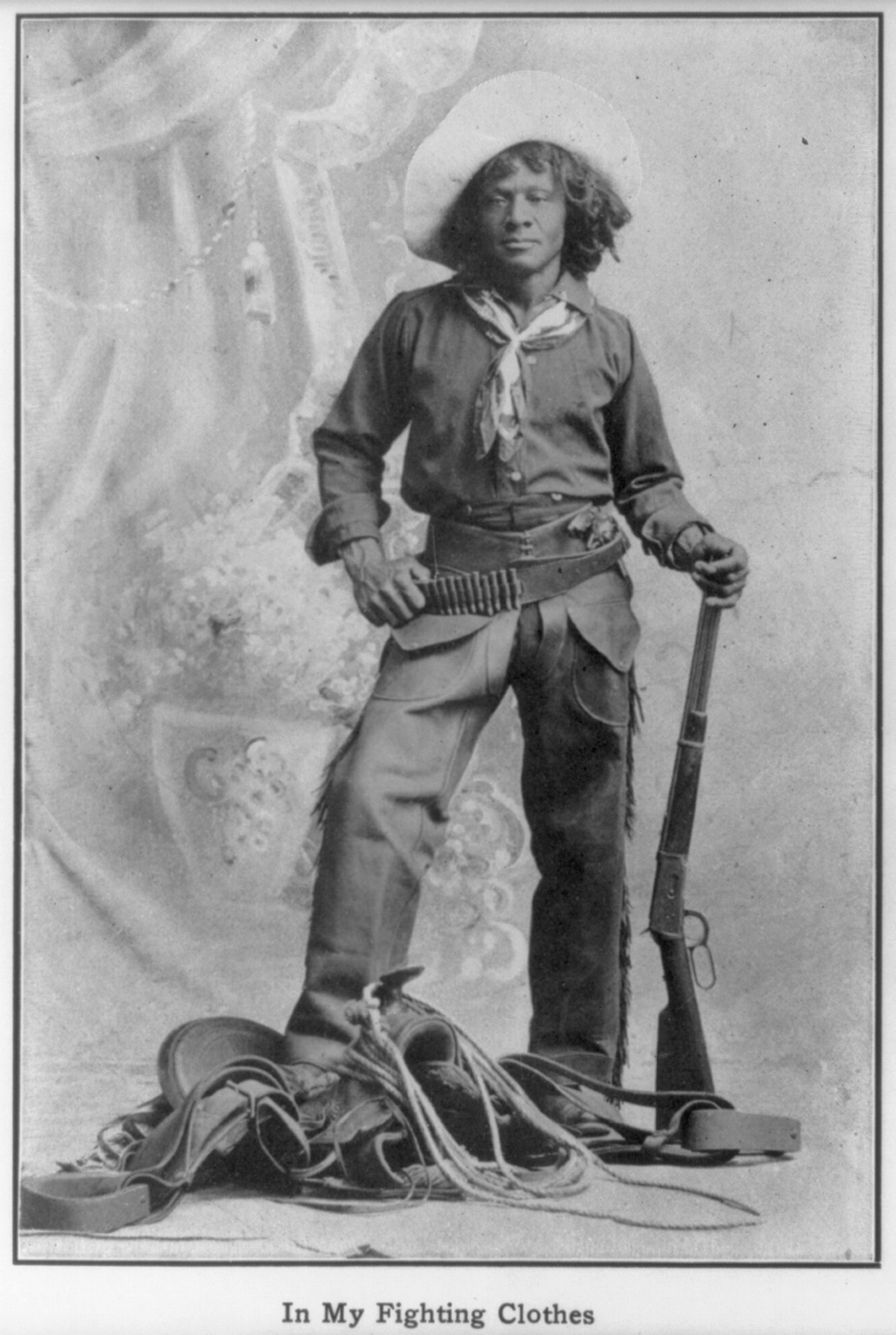Uncovering Hidden Histories from WWII to the Wild West
By Christine Wendling

For the past six years, LSU librarians Hayley Johnson and Sarah Simms have helped give voice to the voiceless by uncovering the hidden histories of the United States of America. Their work began in 2016 with research that examined the internment of Japanese and Japanese Americans in Louisiana during World War II, and with the help of three Carnegie Whitney grants from the American Library Association, it has since expanded to include an exploration of stories from communities that have been historically omitted from narratives about the settlement of the American West.
“The two projects seem so different, but there are these threads that link both. It’s a very natural evolution, even though it’s two different groups from two different periods of time. I think we are both quite passionate about it,” Simms said.
Through an Extended Lens: Louisiana, Internment, and the Geography of Chance
In 2016, Johnson and Simms became inspired by a story they read in the Los Angeles Times in which survivors of U.S. Japanese internment camps spoke out against the rising tide of hate Muslim Americans were enduring. These Americans, who had experienced institutional racism, appeared in a video featuring Muslim children reading aloud letters that had been written by Japanese American children in internment camps. It drew parallels between the rhetoric used against the Japanese during World War II and the rhetoric used against Muslims today.
This video showcasing the solidarity between two communities, one of which had experienced the trauma of incarceration, and another facing the same rhetoric, was a powerful moment for Johnson and Simms. As a result, they became curious as to whether there were any internment camps in Louisiana. Their research led them to Camp Livingston in Alexandria, Louisiana, best known as the site where a series of Army exercises called “the Louisiana Maneuvers" were practiced that helped develop U.S. modern fighting forces. Camp Livingston was far less known as an internment camp that held more than 1,000 Japanese and Japanese American men throughout the war.
After some digging, they interviewed Marion Couvillion Kohara, a member of the only Japanese family living in Alexandria during World War II. Kohara revealed that while her family narrowly escaped being interned, the FBI had investigated her cousin, Reverend Buntetsu Miyamoto, who lived in Hawaii, and had classified him as an “enemy alien.” Eventually, Miyamoto was taken to Louisiana and interned at Camp Livingston.
 Credit: Camp Livingston - 4; Construction Completion Reports, 1917-1944; RG 77; National Archives at College Park, Maryland." data-title=""Latrine 5" (Declassified Authority 803028)
Credit: Camp Livingston - 4; Construction Completion Reports, 1917-1944; RG 77; National Archives at College Park, Maryland." data-title=""Latrine 5" (Declassified Authority 803028)
Credit: Camp Livingston - 4; Construction Completion Reports, 1917-1944; RG 77; National Archives at College Park, Maryland."/>
During his internment, his family had such little economic support, they chose to be interned on the mainland in the hopes of being reunited with him.
“They ended up in a vacated old house owned by a fellow church member. They had no income, so his son, David, left college to work at a nearby bank. They were ostracized in the community. Some members of their church would bring them goods, but many were afraid to do so,” Johnson said.
Eventually, they resorted to entering a family internment camp in Crystal City, Texas, as a means of survival and with the hope that they would be reunited with Miyamoto. In 1943, he was released from Camp Livingston and reunited with his family in Crystal City, but they were not allowed to return home to Hawaii until the conclusion of the war.
The researchers’ interview with Kohara served as the starting point that allowed them to apply for the Carnegie Whitney Grants that they received in 2017 and 2018. The grants allowed them to travel to different archives across the U.S. to piece together more information about Japanese American internment at Camp Livingston.
Through archival records, they discovered that the internees were all men between the ages of 20 and 80, but most were in their 50s. Many of them were chosen for internment because they were leaders in their communities and therefore perceived as threats. Through journals and oral histories, Johnson and Simms found that, unlike other internment camps, they were allowed to receive visitors in some cases and to have recreation in the form of a baseball field. However, they were also forced into hard labor. In the face of this adversity, many practiced “gaman” (我慢), a Zen Buddhist concept of bearing hardship with patience and dignity.
“The point was to find a disciplined way to endure their pain without losing their sense of identity,” Simms said, which the men did through sculpture, calligraphy, and growing bonsai trees.
Originally, Johnson and Simms intended for the final product of their work to be an extensive online resource guide, but at its conclusion, they found they still had so much to say. They decided the best way to describe the profound impact this work had on them would come in the shape of a book, Beneath Heavy Pines: A Story of Faith, Trial, and Triumph through World War II Japanese American Internment, forthcoming from Lexington Books in 2023.
Blood and Thunder: The Idealized American West and Its Place Today
 Credit: Nat " deadwood="" dick"="" love,="" -="" ,="" full,="" standing,="" facing="" front="" "in="" my="" fighting="" clothes"="" in="" cowboy="" attire,="" holding="" carbine.="" 1907.="" photograph.<="" em="" data-align="center"/>" data-title="American cowboy Nat Love (June 14, 1854 – February 11, 1921) is one of the most well-known examples of western Black cowboys because he documented his life and exploits in memoirs.
Credit: Nat " deadwood="" dick"="" love,="" -="" ,="" full,="" standing,="" facing="" front="" "in="" my="" fighting="" clothes"="" in="" cowboy="" attire,="" holding="" carbine.="" 1907.="" photograph.<="" em="" data-align="center"/>" data-title="American cowboy Nat Love (June 14, 1854 – February 11, 1921) is one of the most well-known examples of western Black cowboys because he documented his life and exploits in memoirs.
Credit: Nat "Deadwood Dick" Love, - , full, standing, facing front "in my fighting clothes" in cowboy attire, holding carbine. , 1907. Photograph."/>
In 2022, Johnson and Simms received their third Carnegie Whitney Grant for a new project, “Blood and Thunder: The Idealized American West and Its Place Today.”
“Just as the history of Japanese enemy alien internment has been left out of the dominant historical narrative, so too were the histories of many Indigenous and non-white peoples during America’s westward expansion in the 19th century. Unfortunately, this thread of exclusion runs long through our history. We hope that by highlighting it through these two research projects, we can help finally cut the cord,” Johnson said.
Now, they are exploring how the idealized myth of the West and westward expansion was used to justify the expulsion and murder of indigenous peoples, the taking and exploitation of land and resources for economic gains, and the exclusion of minority groups who were perceived as infringing on the rights and resources deemed exclusive to Anglo settlers. This project will use the stories and experiences of those communities that have been historically excluded and oppressed to paint a fuller picture of the dominant historical narrative.
This research is still in what Simms describes as the “discovery phase.” Like any good detectives, Johnson and Simms are starting with a broad concept and will let the initial stages of their investigation help them zero in on areas of focus.
The grant will fund their travel to archives located throughout the heart of the Midwest. In Oklahoma City, they plan to visit the First Americans Museum, the largest single-building tribal cultural center in the country, honoring Oklahoma’s 39 tribal nations and housing the National Native American Hall of Fame.
“This museum is created and curated solely by Native Americans, and the museum tells the story of those nations as they lived it. The museum’s mission is to educate the public about the unique cultures, diversity, history, contributions, and resilience of these Nations. I’m excited to see what we will learn,” Johnson said.
In Wyoming, they will visit the Buffalo Bill Center of the West, which houses one of the country’s largest and finest collections of Plains Indian art and artifacts in addition to an extensive research library that contains more than one million photographic images that the researchers hope will help bring their findings to life.
“LSU librarians are interdisciplinary by nature. We are connectors of people and information. It is so important for us to be able to assist our students and researchers in deepening their knowledge by uncovering previously unknown sources of information that they can then use to enrich their own scholarly works,” Simms said.
“We are constantly questioning what ‘American history’ actually means and who is being left out of that conversation. At the conclusion of this research, we plan to develop a very approachable supplemental resource that goes beyond what you’d typically learn about in your introductory history classes, something that anyone can pick up and learn from,” Johnson said.
